Issue Archive
Table of Contents
BLOOD COMMENTARIES
PLENARY PAPER
Intact TP-53 function is essential for sustaining durable responses to BH3-mimetic drugs in leukemias
HOW I TREAT
How I treat primary ITP in adult patients who are unresponsive to or dependent on corticosteroid treatment
A very common challenge in managing patients with primary immune thrombocytopenia (ITP) is what to do after initial corticosteroid therapy has not fully resolved the clinical problem and further therapy is indicated. Ghanima et al outline their approaches to this problem in a practical companion to recently published guidelines.
CLINICAL TRIALS AND OBSERVATIONS
Ignoring instead of chasing after coagulation factor VII during warfarin management: an interrupted time series study
Clinical Trials & Observations
The prothrombin time–based international normalized ratio (PT-INR) is the benchmark for warfarin therapy monitoring, but is it the best way to monitor anticoagulation with this drug? Oskarsdottir and colleagues propose a new test that is insensitive to changes in factor VII but also reflective of the changes in factors II and X, which determine the antithrombotic effect. In a retrospective observational study, use of the Fiix-normalized ratio test appears to offer advantages over the PT-INR, with reductions in thromboembolic events, frequency of testing, and dose adjustments, without an increase in major bleeding.
A better way to monitor warfarin therapy?
Clinical Trials & Observations
HEMATOPOIESIS AND STEM CELLS
IMMUNOBIOLOGY AND IMMUNOTHERAPY
CXCR4 signaling controls dendritic cell location and activation at steady state and in inflammation
Gallego et al analyzed in detail the impact of a gain-of-function mutation of CXCR4 responsible for the WHIM syndrome (warts, hypogammaglobulinemia, infections, and myelokathexis) on dendritic cells (DCs) in humans and mice. They show that patients with WHIM syndrome exhibit quantitative defects in circulating plasmacytoid DCs but not conventional DCs and that this is due to reduced plasmacytoid DC egress from the marrow rather than related to defects in differentiation or function.
LYMPHOID NEOPLASIA
Adaptive T-cell immunity controls senescence-prone MyD88- or CARD11-mutant B-cell lymphomas
Genomic and transcriptomic correlates of Richter transformation in chronic lymphocytic leukemia
Phase 2 study of the safety and efficacy of umbralisib in patients with CLL who are intolerant to BTK or PI3Kδ inhibitor therapy
Clinical Trials & Observations
Mato et al report the results of an open-label multicenter phase 2 study of the phosphoinositide 3-kinase (PI3K) inhibitor umbralisib in patients with chronic lymphocytic leukemia (CLL) intolerant of prior Bruton tyrosine kinase or other PI3K inhibitors. They note a median progression-free survival of approximately 2 years and a tolerable toxicity profile, suggesting that this is an effective strategy for this subgroup of patients.
MYELOID NEOPLASIA
Prognostic significance of concurrent gene mutations in intensively treated patients with IDH-mutated AML: an ALFA study
CME
Clinical Trials & Observations
While isocitrate dehydrogenase (IDH) mutations are not considered to define a distinct subclass of acute myeloid leukemia (AML), selective IDH inhibitors are now in phase 3 trials in combination with intensive chemotherapy (IC). Using a large prospectively studied cohort of newly diagnosed patients with IDH-mutated AML treated with IC, Duchmann and colleagues investigated associations between other concurrent mutations and prognosis. Their data, presented in this month's CME article, suggest that concurrent NPM1 mutation is a favorable prognostic factor and that allogeneic transplantation improves disease-free and overall survival for patients with accepted unfavorable genetic characteristics.
THROMBOSIS AND HEMOSTASIS
Postdischarge thromboembolic outcomes and mortality of hospitalized patients with COVID-19: the CORE-19 registry
Clinical Trials & Observations
In this prospective registry study of approximately 5000 patients, Giannis et al investigated associations between a range of comorbid conditions and postdischarge thrombotic events in patients hospitalized with COVID-19. They report that prophylactic-dose anticoagulation following discharge may be beneficial, with 46% fewer major thrombotic events or deaths observed in the cohort selected to receive this therapy.
LETTER TO BLOOD
Primary therapy and survival in patients with Burkitt lymphoma in The Netherlands: a population-based study, 1989-2018
Clinical Trials & Observations
BLOOD WORK
ERRATA
CONTINUING MEDICAL EDUCATION (CME) QUESTIONS
-
Cover Image
Cover Image
![issue cover]()
Isolectin B4 (green) and anti-CD41 (red) immunofluorescence-stained diencephalon with an aneurysmlike angiogenic sprout in an Clec-2−/− mouse at embryonic day11.5. Notice the multiple large CD41+ embryonic megakaryocytes in the vessel. See the article by Hoover et al on page 2756.
- PDF Icon Front MatterFront Matter
- PDF Icon Table of ContentsTable of Contents
- PDF Icon Back MatterBack Matter
- PDF Icon Editorial BoardEditorial Board
Advertisement intended for health care professionals
Email alerts
Advertisement intended for health care professionals




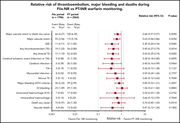
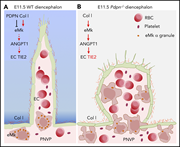
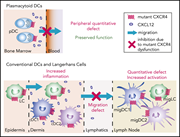
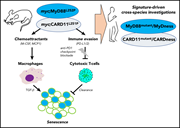
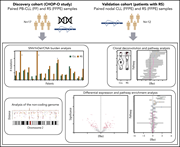

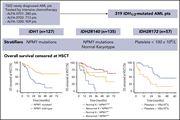


Targeting MCL-1 and BCL-2: a 1-2 punch